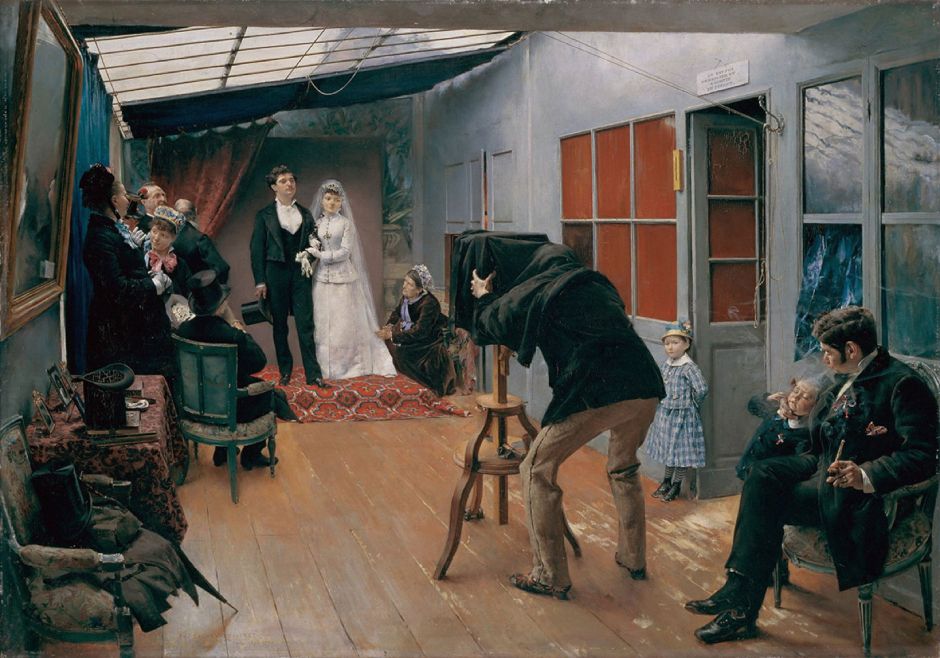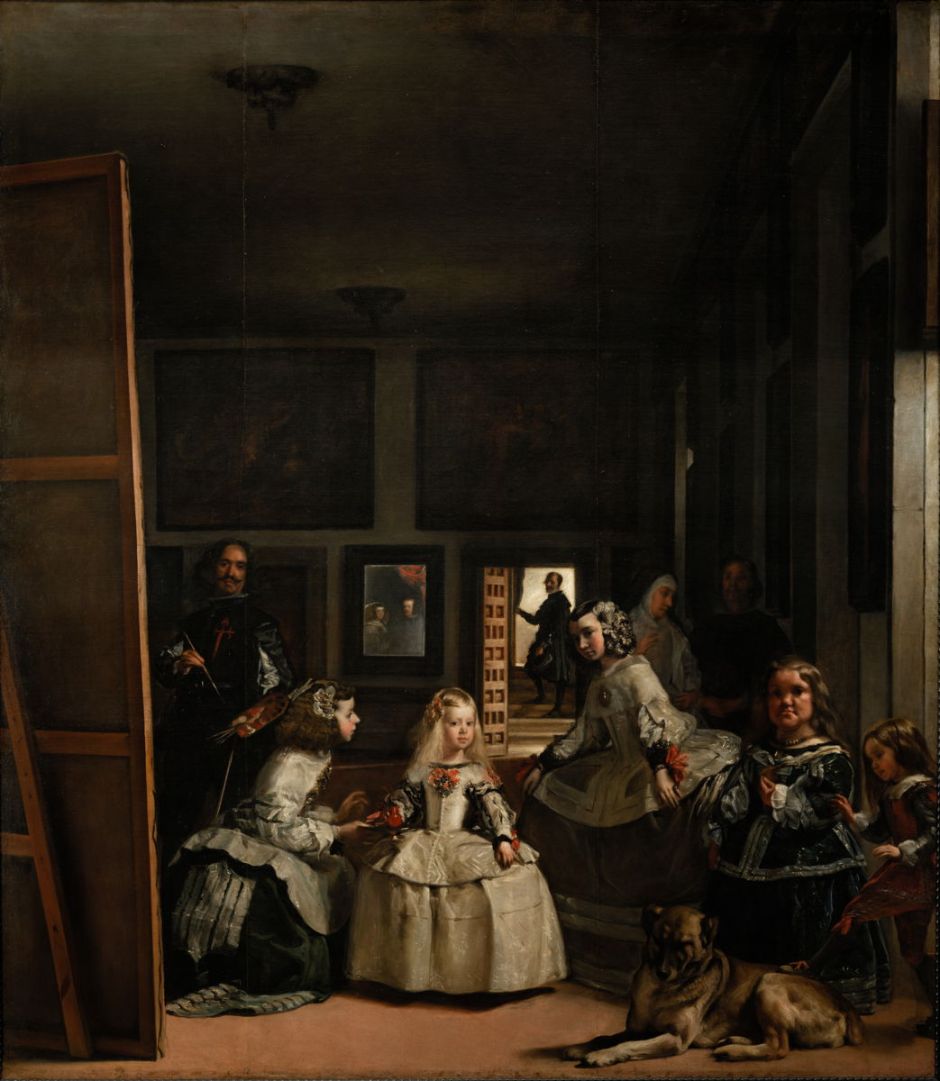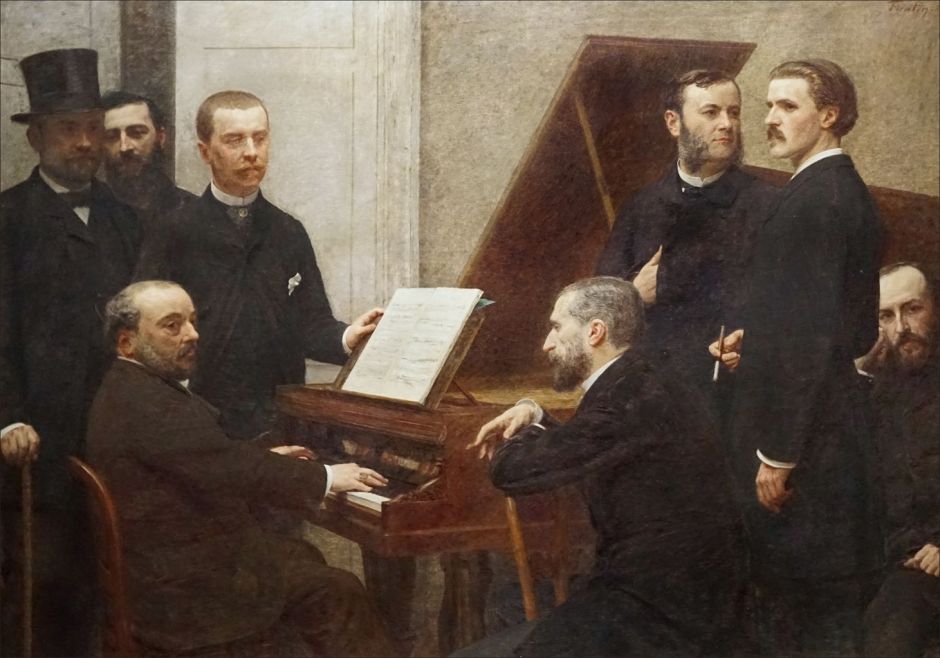Reading visual art: 165 Group portraits B
Following the conundrums of the group portraits of the first of these two articles, this shows some that appear more straightforward, although they still need to be approached by asking who, where and when.

Raphael’s Portrait of Pope Leo X with Cardinals Giulio de’ Medici and Luigi Rossi (1517-19) groups its three figures closely together. The Pope sits not on a throne, but more informally, a magnificent illuminated book (thought to be the ‘Hamilton’ Bible from about 1350) open in front of him and a magnifying glass in his left hand.

Augustin Théodule Ribot’s Breton Fishermen and Their Families (c 1880-85) is a gritty collection of nameless faces from the coast of the north-west of France. Their features are as hard as the weather that they must have faced.

Moving towards the end of the nineteenth century, and to the artist’s colony of Skagen at the northern tip of Jutland in Denmark, we come to PS Krøyer’s magnificent group portrait of many of the Nordic Impressionists who gathered there each summer. From the left, moving around the table, this shows: Martha Møller Johansen, Viggo Johansen, Christian Krohg, PS Krøyer, Degn Brøndum, Michael Ancher, Oscar Björck, Thorvald Niss, Helene Christensen, Anna Ancher, and Helga Ancher. While this may appear a spontaneous record of an actual event, in fact it was over four years in the painting, and it seems unlikely that this group ever met in these circumstances.

The French Naturalist artist Pascal Dagnan-Bouveret was technically one of the most brilliant of all Cabanel’s students. He could achieve realism of photographic quality, as shown appropriately in this Wedding at the Photographer’s from 1879. Here is a painted group portrait of a couple and their family being photographed for their group portrait.
Many of the greatest portrait painters also created fine group portraits.

Some of Sir Godfrey Kneller’s many portraits of the British gentry include children or groups, such as The Harvey Family, painted in 1721.

In Sir Joshua Reynolds’ portrait of Lady Elizabeth Delmé and Her Children (1777-9) his brushwork becomes painterly for their clothes and in the background.

Élisabeth Louise Vigée Le Brun painted more than thirty portraits of Marie Antoinette (1755-1793), wife of King Louis XVI, who was guillotined on 16 October 1793 during the French Revolution. This family portrait from 1787 shows Marie-Antoinette de Lorraine-Habsbourg, Queen of France, and Her Children. Vigée Le Brun started work on this on 9 July 1786, her sitter choosing a red dress fit for a queen. With her are Marie-Thérèse, the Duchess of Angoulême, Louis-Charles, who was to become Louis XVII of France, and Louis-Joseph, who became the Dauphin. The empty cradle was for Marie-Sophie-Béatrice, who died on 19 June, shortly before she would have been one.
My final paintings are all by artists of their families.

Benjamin West’s group portrait of The Artist and His Family from about 1772 gives insight into his peculiar circumstances. It shows, from the left, the Wests’ older son, Benjamin West’s wife Betsy, cradling their newborn second son in her lap, Benjamin West’s brother Thomas, and father John (who had been born in England), and standing in his lavender gown, holding palette and maulstick, is the artist himself.
Often compared with a traditional Nativity scene, it was described at the time as a “neat little scene of domestic happiness”. But looking at the directions of gaze, and the extraordinary detachment of Thomas and John West, who are staring into the distance, domestic happiness seems far away.

The short-lived Philipp Otto Runge painted this group portrait of We Three in 1805, the year after he had finished his Academy training, and shortly after his marriage. This shows his older brother Johann Daniel on the left, with the artist and his bride Pauline. This may have been painted after the couple had moved back to Hamburg later that year, although they soon returned to live with his parents in Wolgast.

During the summer of 1867, Frédéric Bazille started work on Portraits of the *** Family also known as The Family Gathering, which he didn’t complete until January 1868. This seems to have been one of his most carefully composed paintings, and he devoted a series of sketches to getting the arrangement of the figures and the terrace just right.
The figures include the artist, squeezed in last at the extreme left, an uncle, Bazille’s parents seated on the bench, Bazille’s cousin Pauline des Hours and her husband standing, an aunt and Thérèse des Hours (model for The Pink Dress) seated at the table, his brother Marc and his partner, and at the right Camille, the youngest of the des Hours sisters. This painting marked a special version of a regular summer meeting, as Pauline des Hours and Bazille’s brother Marc married the partners shown in the late summer of 1867.
At the time, such group portraits were exceptional in French art. It was exhibited at the Salon in 1868, and remains one of Bazille’s finest and most innovative works.

By contrast, Michael Peter Ancher’s family portrait on Christmas Day 1900, completed in 1902, looks funereal. A family bible is open on the table as they gaze grimly away from the magnificent triptych of waves behind them. I believe that the woman at the far right is Anna Ancher, then aged 40; she wears a distinctive necklace with an anchor, the Danish for which is anker.

One of Lovis Corinth’s most popular paintings from the early years of the twentieth century is this group portrait of The Artist and his Family (1909). All dressed up for what may have been intended to be a more formal group portrait, the artist’s wife Charlotte sits calmly cradling their daughter Wilhelmine, then just five months old, as the artist is struggling to paint them. Their son Thomas, aged five years, stands on a desk so that he can rest his hand on mother’s shoulder.




















